West Hartford Doctor Uses Medical Skills and Other Talents to Help Disaster Victims

Audio By Carbonatix

Dr. Robert Fuller, nurse James (RNRN) and local doctor, Clement Prado, are treating a patient at the High Rock Clinic. Photo by Laurence Desroches/International Medical Corps
Rob Fuller has responded to disasters throughout the world, and his unique skillset as a medical doctor who can do his job in spartan conditions combined with an ability to also repair generators has served him well.
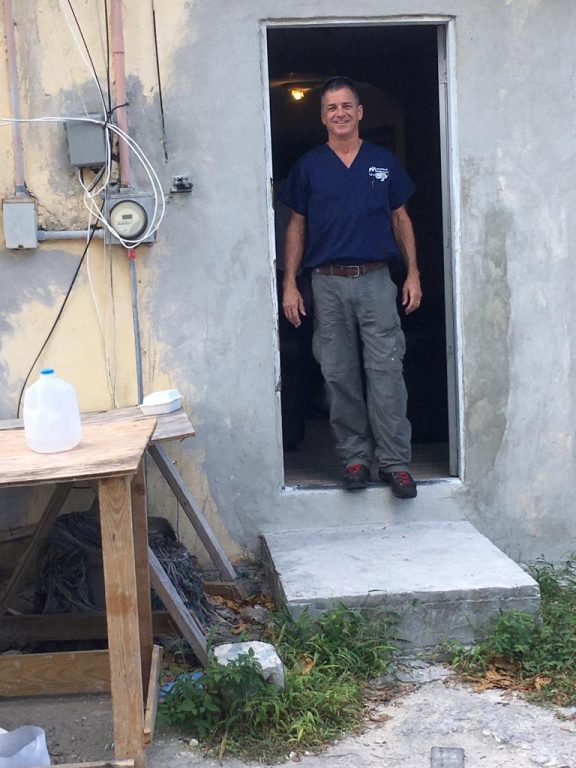
Dr. Rob Fuller leaves a home on Grand Bahama after providing medical care to a resident in the aftermath of Hurricane Dorian. Courtesy of Rob Fuller.
By Ronni Newton
Dr. Rob Fuller is accustomed to encountering a variety of cases in his day-to-day work as head of Emergency Medicine at UConn’s John Dempsey Hospital, but he does it in a sterile environment, with state-of-the-art equipment and the ready assistance of other professionals.
He’s also expert at doing his job in a very different environment, where there may not be electricity, or running water, or even a roof over his head.
“Disasters have become my thing,” said Fuller, a West Hartford resident who has worked with teams from the International Medical Corps (IMC) responding to nearly a dozen emergencies throughout the world. He’s had experiences he never could have imagined.
In the aftermath of 9-11, he headed to New York, working with a special response team.
The following year, when a tsunami hit Indonesia, he went to Banda Aceh. “That was the worst hit, there were 130,000 killed,” Fuller said.
He was in the Philippines in the aftermath of a large typhoon, and in Ecuador after a catastrophic 7.8 magnitude earthquake in 2016 killed nearly 700 people, injured thousands more, and leveled tens of thousands of buildings.
“I helped perform the first surgeries in Haiti,” he said, following the devastating earthquake there in January 2010. His role: anesthesiologist.
Fuller has been an emergency medicine doctor for about 25 years, and while the specialty may not seem to have the same cachet as brain surgery, “it’s a very thoughtful specialty,” he said. “You’re a bit like Sherlock Holmes,” seeing patients with a variety of complaints, situations which often present as mysteries to be solved.
He still finds emergency medicine fun – and a very useful background for responding to disasters. “I can do a lot of things, and am very flexible about the environment and not intimidated by illness.”
Early on, “I discovered that I enjoy working in an austere medical environment,” said Fuller, a graduate of UMass Amherst and Loyola University (Chicago) Medical School.
Even as a medical student, Fuller was drawn to less-than-state-of-the-art environments. He did one of his rotations at a small hospital on the tropical island of St. Lucia. He went back a year later and volunteered to help set up their emergency room, and has continued to return every year.
“I got good at doing medicine when the power goes out, and there’s no water,” he said.
Fuller has started a fellowship at UConn: “How to Respond to an International Emergency as a Medical Doctor.” He’s already trained one person, and another is in the program right now.
Fuller said that his toughest missions were responding to the tsunami in Indonesia and the earthquake in Haiti.
“There were big culture gaps to cross, and I don’t speak French or Indonesian.” In addition, the devastation was so monumental that the entire medical system had been obliterated and there was such a vast number of injured patients.
Bahamas, 2019
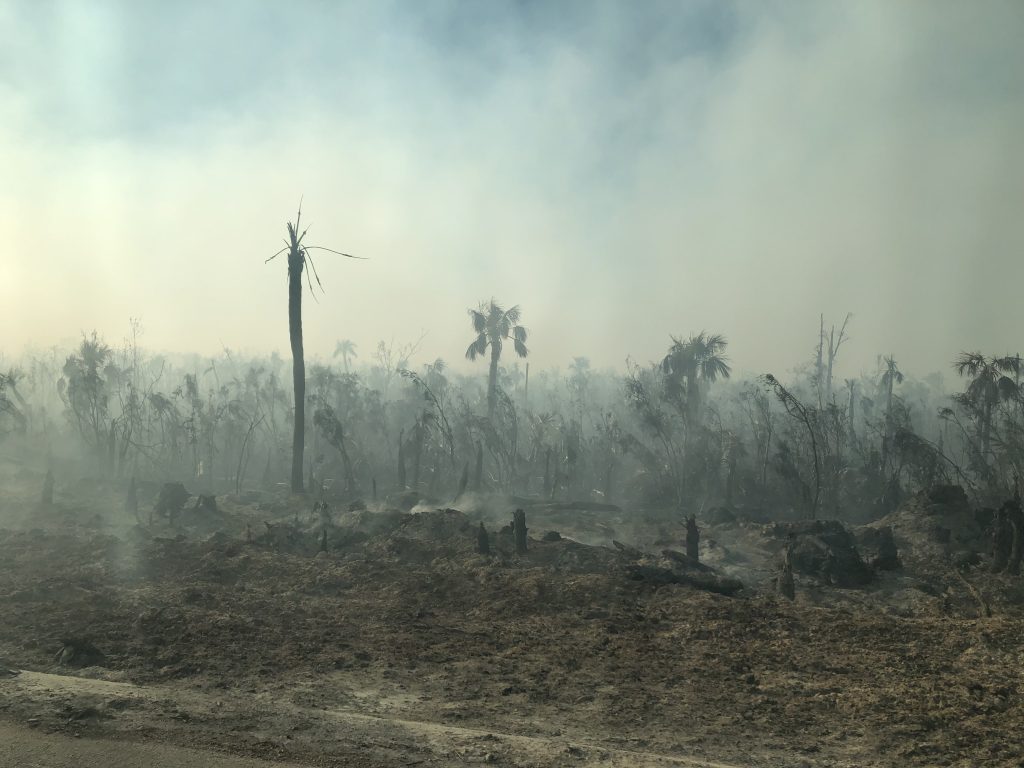
Driving through the fires to reach towns on the eastern end of Grand Bahama. Photo credit: Laurence Desroches / International Medical Corps
Fuller arrived in the Bahamas the third week of September, in the second phase of IMC’s response to Hurricane Dorian.
Dr. Natalie Moore – who was the first to complete his disaster recovery fellowship – and nurse Amanda Ramsell, both from UConn’s John Dempsey Hospital’s Emergency Department, were part of a four-person team working on the initial response.
Moore deployed from Florida and arrived on Grand Bahama Sept. 8. Dorian had wiped out homes as well as outpatient clinics, and her role included assessing the capacity of clinics on the eastern end of the island, in the communities of Freetown, High Rock, Pelican Point, and McLean’s Town.
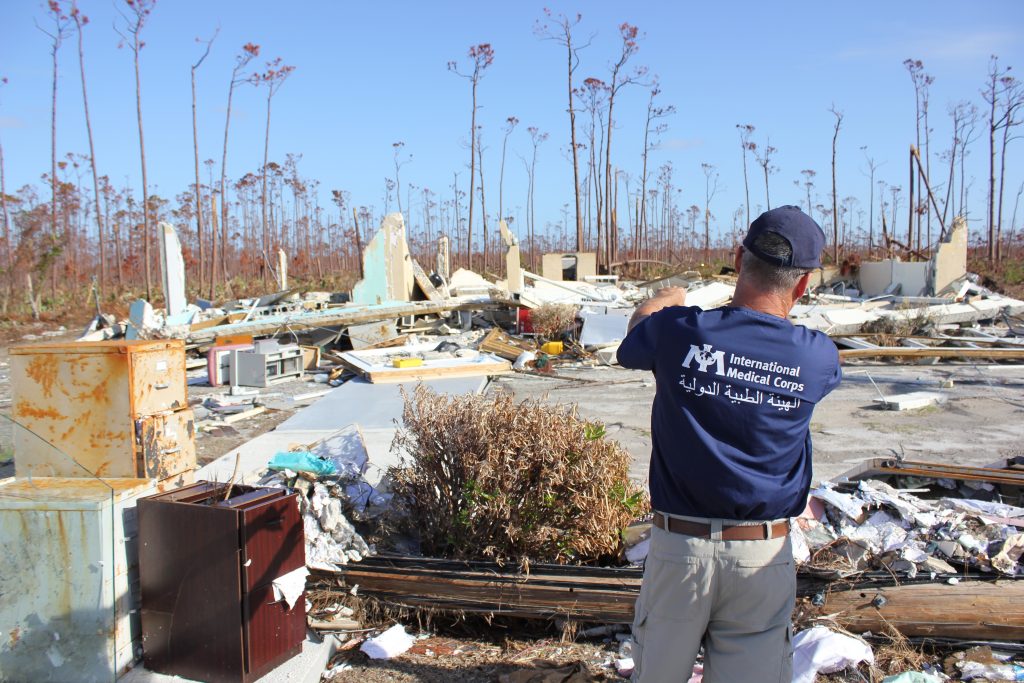
Dr. Robert Fuller looking at what is left of the High Rock Clinic. Photo by Laurence Desroches / International Medical Corps
“All of these outpatient clinics had been destroyed in the storm and no other medical providers had been out to assess these folks except for one dedicated community physician who walked from Freeport all the way to High Rock as the roads were impassable,” Moore told UConn Today. “We were the first medical team to reach Pelican Point and McLean.”
Fuller said that the Bahamas includes hundreds of small islands, but not all were severely impacted. Nassau, probably the most popular tourist destination, was virtually unscathed from the storm, receiving just some heavy rain and wind.
“I flew into Nassau and stayed at a really nice hotel,” he said. Then he went to Grand Bahama, landing at the airport in Freeport – the most well-known destination on that island.
“The airport was really wrecked. Water had come in and knocked all the buildings over,” and Fuller said that in order to be processed, they had to be bused to a nearby mall. The town of Freeport itself is on higher ground, however, and wasn’t severely damaged – unlike the eastern part of the island where the IMC crews were deployed.
“The hurricane parked there,” Fuller said. And stayed for three tides – about 40 hours. Very few houses in Freetown, High Rock, Pelican Point, and McLean’s Town survived.
As Fuller’s team drove to the eastern end of the island, they had to travel through fires. Debris swept to the side as crews opened the roads had dried out and caught fire, he said.
There were toppled trees everywhere, but most of the trees had been uprooted from somewhere else, and had floated to where they came to rest when the water receded.
The tideline was visible on trees left standing – a yellow line crossing through the forest.
IMC crews assisted the Ministry of Health in opening mobile medical units – clinics in pop-up tents. They canvassed neighborhoods to let people know they were there, and could offer help. The construction of a semi-permanent clinic in two sturdier tents, powered by a solar field donated by Tesla, came next.
Ramsdell, the nurse from UConn, arrived Sept. 11. “To reach those individuals to let them know that the clinic was back opening and functioning, and to go out to those who didn’t have the ability to get to those clinics, we would take a nurse and then a doctor from public health in the Bahamas with us, to go door-to-door,” she told UConn Today.
Like Fuller, Moore and Ramsdell have responded to other disaster relief missions and were experienced in dealing with a situation like they found in Grand Bahama. People had lost their medications and needed refills – a dire need for diabetics. There were wounds, mostly minor, and respiratory issues, and they administered a lot of tetanus shots and prophylactic antibiotics.
The communities on the eastern end of Grand Bahama are pretty small, and Fuller said a significant number of people were still missing. One man told Moore that 17 people from High Rock’s main street were missing.
Pelican Point only had about 40 homes, and a large percentage of residents were still unaccounted for. Sadly, Fuller said, they had probably been swept out to sea.
In Freetown Fuller was assisted by Nurse Marshall, a Bahamian in her 40s. She told him that she and her husband braved the storm in their home, a one-story cement structure with a wooden roof several miles from the ocean. She told him the water came into their yard, and quickly rose to their windows.
The nurse and her husband took refuge in the attic, climbed to the rafters. The water rose to their knees. She told Fuller that at one point they heard a banging noise and her husband pushed out a grate at the end of the attic and saw a boat. They thought it was rescuers but realized it was an empty boat that had drifted there from miles away, floating in the water that submerged their yard and banging against their house.
The couple spent two tides trapped in the rafters of their attic.
“What’s amazing to me is then she went to work,” said Fuller. “The people are so strong and resilient.”
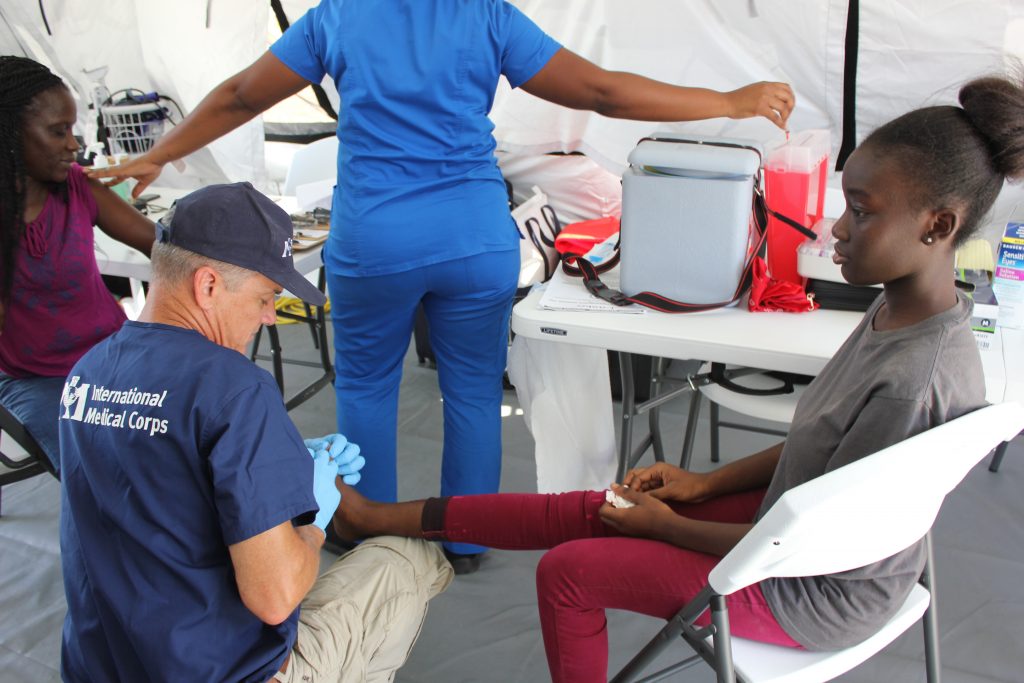
Danetra lost her mom in the storm. She arrived at the clinic after stepping on a nail while cleaning out her home. Dr. Rob Fuller cleaned the wound and gave her a tetanus shot.
Photos by Laurence Desroches / International Medical Corps
In High Rock, Fuller said, he treated a woman whose daughter and 5-year-old twin grandsons had stayed in their home rather than evacuating. They were lost in the storm, and when the woman came to look for them and saw some of the boys’ belongings, she fainted.
“It’s such an intimate community. To have that kind of loss …” said Fuller, his voice trailing off.
Fuller returned to work at UConn Oct. 7 after spending two weeks on Grand Bahama. He followed Moore and Ramsdell’s team, and another team of doctors and nurses relieved his group.
“The medicine itself wasn’t a challenge,” he said of the experience in the Bahamas, but in addition to assisting with rebuilding clinics, the next team will have some new issues to deal with – treating the mental health of residents who are emerging from the initial stress of coping with the storm and its aftermath and facing the great loss they have suffered.
It’s not something he does, but IMC has programming for mental health, Fuller said. They hire local professionals to administer it.
IMC gets its funding from various sources, including the United States Agency for International Development (USAID) Office of U.S. Foreign Disaster Assistance (OFDA). Private donations from companies like Pfizer, Tesla, and tech companies are also critical in supporting IMC’s efforts.
Collaboration between non-governmental organizations is huge, Fuller said. On Grand Bahama, fresh water was produced on a mercy ship using a reverse osmosis process, and dispensed to the Rotary Club of Grand Bahamas, which then brought it by trailer to communities where residents could come fill their buckets.
The Tesla solar array was great, Fuller said. It was much quieter and more reliable than a generator. There was also a disc that connected to a satellite, and residents could use it for communication.
Communication – along with water, shelter, and toilets – has now become a key element of disaster response, he said.
The World Health Organization’s Pan American Health Organization, through its “cluster system,” effectively managed the response to Dorian, Fuller said.
Why international disasters?
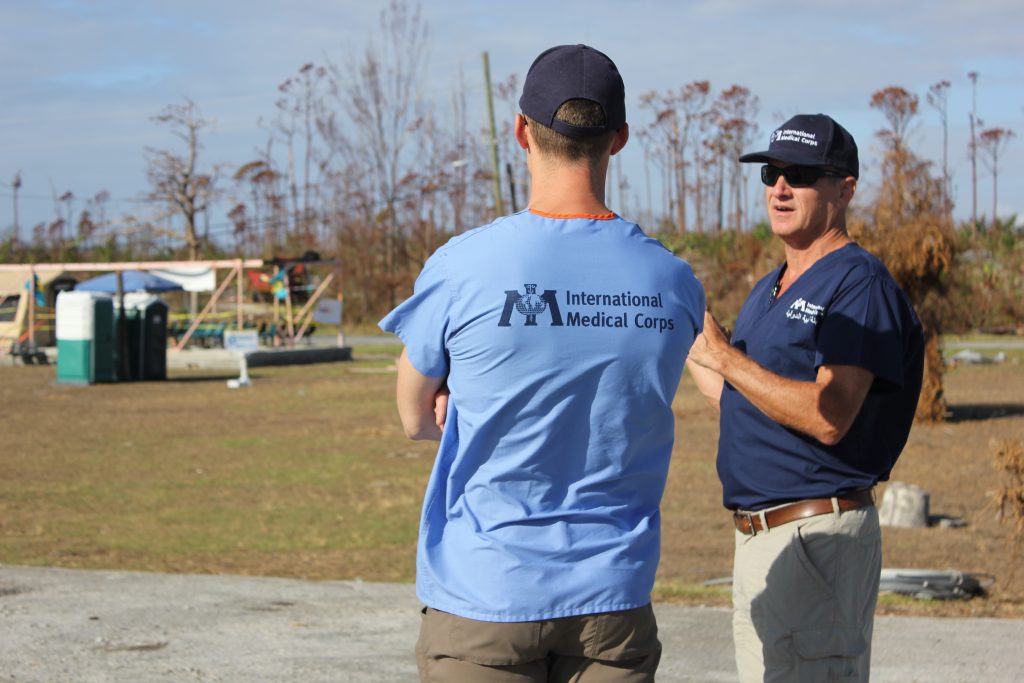
Dr. Robert Fuller giving a short training and overview of the High Rock Clinic to a health volunteer. Photo by Laurence Desroches / International Medical Corps
Fuller said he’s served as a resource to those responsible for disaster management in Connecticut, but prefers assisting outside the country.
The U.S. has a lot of resources, he said. But at the same time, “it’s more complicated to respond to U.S. disasters.”
He thinks he can have greater impact in countries where things are less organized, where there is less infrastructure.
The need in other countries is different. When homes are ruined, the people don’t often have insurance to help them rebuild.
Fuller isn’t a veteran, and wasn’t a Boy Scout. He grew up in Plainville, MA, a rural town near Foxborough.
“I know how to fix everything, tie every knot, fix every motor.”
His dad was a builder. Growing up he sailed, and he camped, and he became an EMT. He enjoyed working on cars.
He can carry everything he needs in a 30-quart capacity backpack – something he teaches others in his courses.
The essentials include a water filter and purification tool, “calories” (some type of packaged bar), a knife, compass, and gear for sun, mosquitos, and rain. “I try to have enough for three days of independent activity,” he said. He wears sturdy hiking boots, and doesn’t bring any other shoes.
Fuller is a medical doctor, but he has many other skills that make him uniquely suited to international disaster recovery missions. “It’s pretty useful, if you can fix a generator you’re a hero,” he said.
Also, Fuller said, “I find it stimulating to meet people from different cultures.”
He would love to assist on more missions, but that would mean more time away from his job and his family.
Fuller has three daughters, all graduates of Hall High School. His oldest daughter earned her bachelor’s degree at UConn and is now in her first year of UConn Medical School. His middle daughter is a 2019 UConn grad and is planning to start nursing school. His youngest is a sophomore at UConn.
Fuller’s wife, Natalie, is a scientist with a Ph.D. in molecular biology who works as a scientific editor.
UConn is very supportive of his work with IMC, Fuller said. His bosses understand it’s part of who he is, and it’s the best way he can model what he is teaching to others.
There is a price to pay for being gone for a few weeks, and Fuller said he’ll be working a few weekends to help out his partners who covered his shifts.
Fuller said his wife worries about him when he’s on a mission.
“Early in disasters it can be quite unsettling. There can be unrest, crime, earthquakes can continue to happen,” he said. In some places the police or military aren’t always helpful, he added.
He doesn’t really worry about himself.
“I’m naïvely happy to wander in blindly – more naïve than brave,” said Fuller.
The work in the Bahamas is progressing, Fuller said, and will transition from the initial disaster response to rebuilding, education, and mental health support.
What the islands also need is the economic support of tourists, Fuller said.
There are many places that aren’t damaged. “They really should be visited,” he said.
This story originally appeared in the November 2019 issue of West Hartford LIFE.
Like what you see here? Click here to subscribe to We-Ha’s newsletter so you’ll always be in the know about what’s happening in West Hartford!
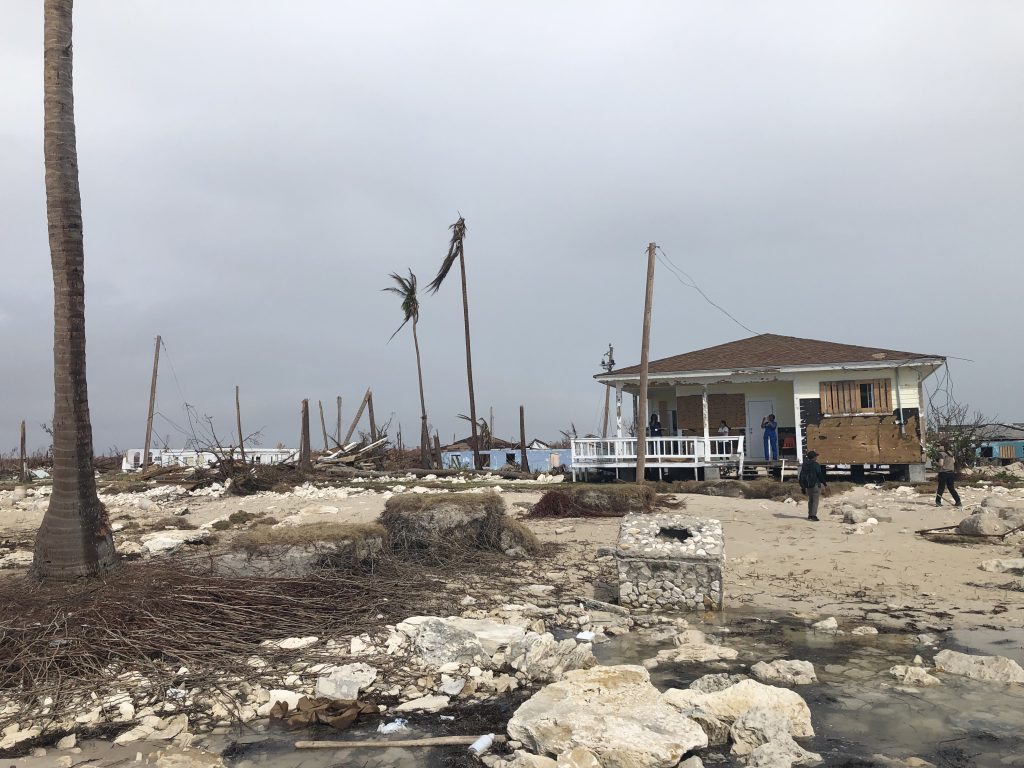
In one town on the eastern end of Grand Bahama, medical professionals work out of a building that, although damaged, still has a roof and most of its exterior walls. Photo credit: Laurence Desroches / International Medical Corps

Virtually nothing remains of a medical clinic in a town on the eastern end of Grand Bahama. Photo credit: Laurence Desroches / International Medical Corps


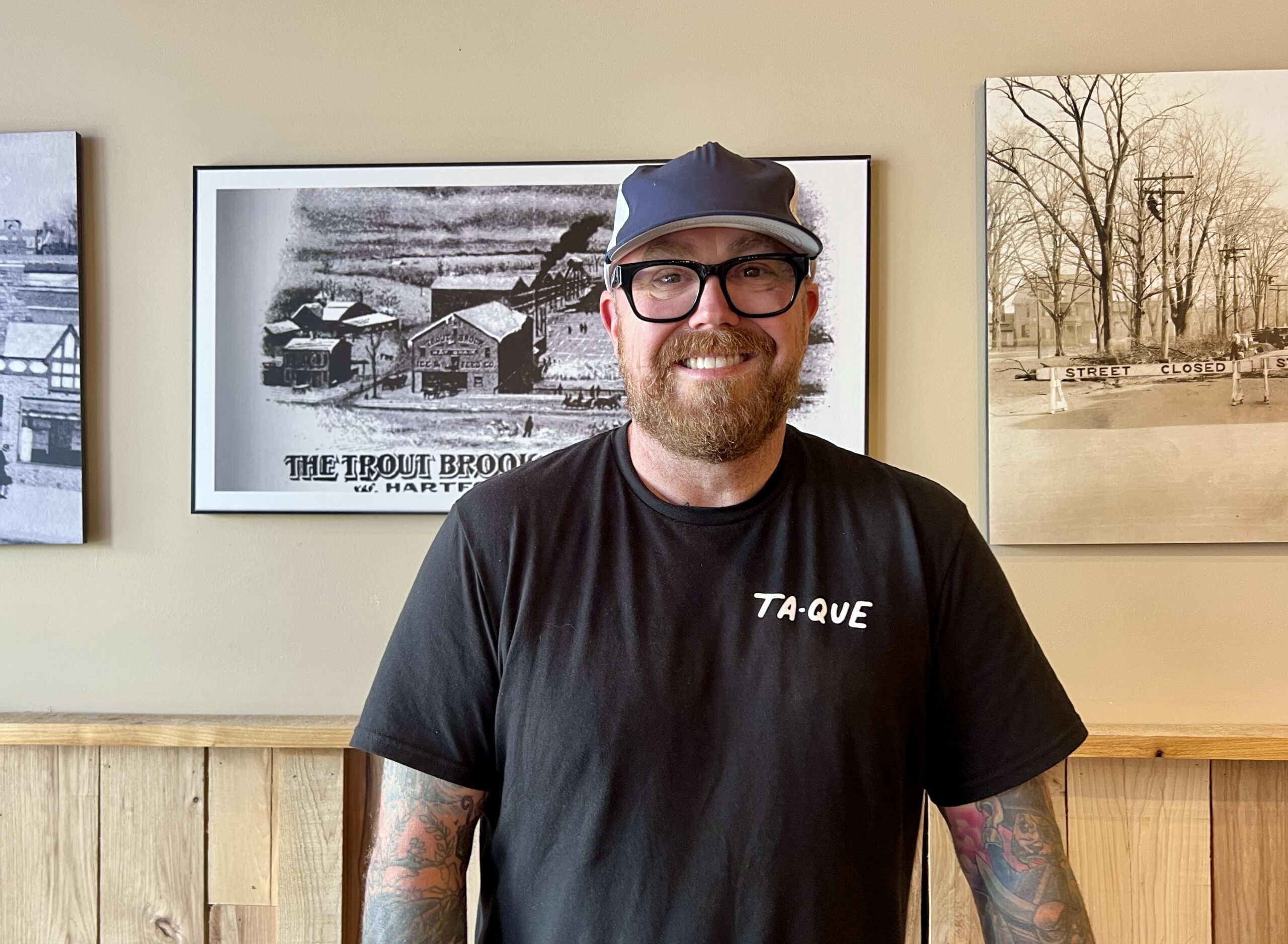
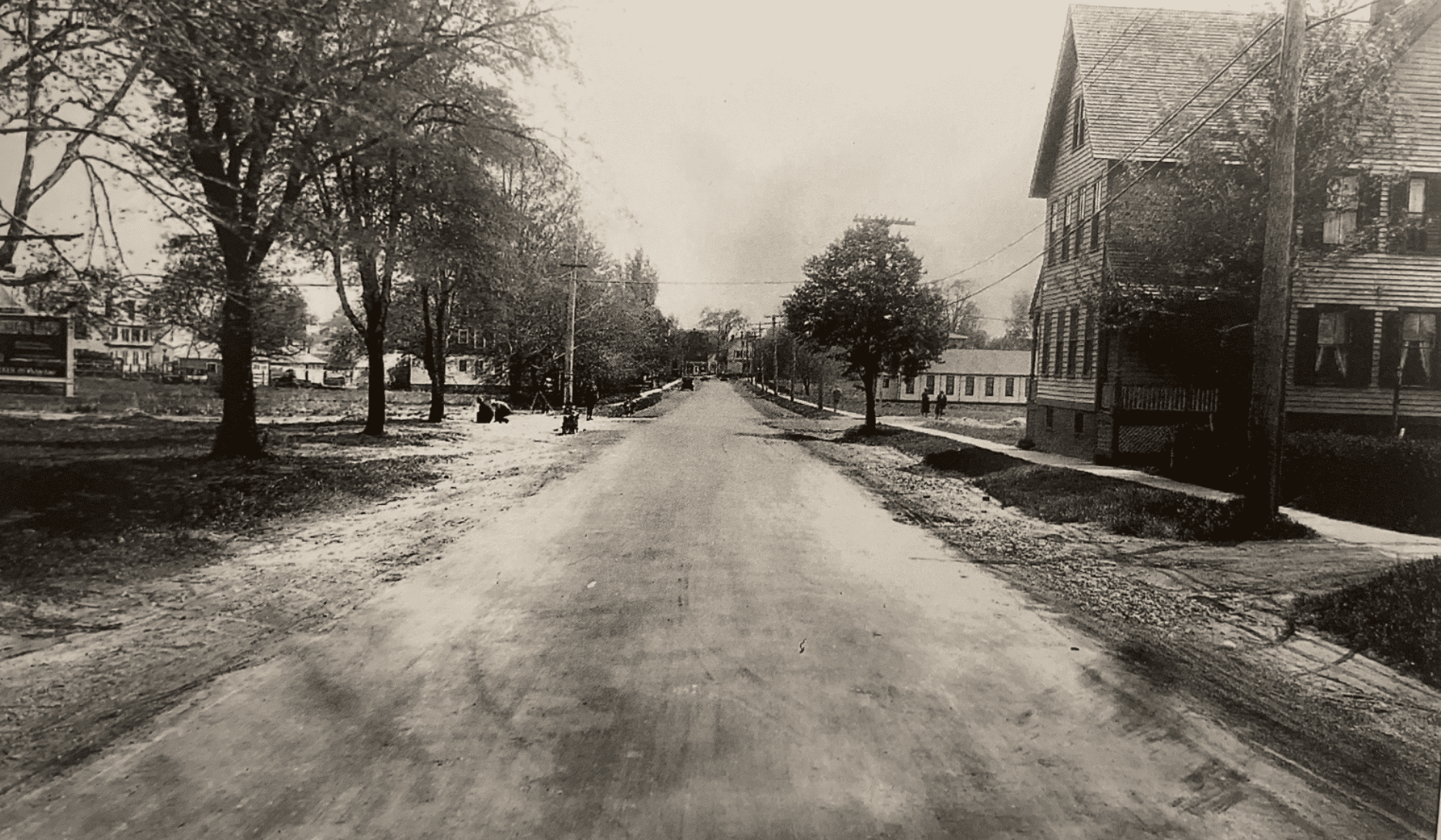
[…] of his expertise in dealing with the aftermath of disasters – working with teams from the International Medical Corps (IMC), Fuller has responded to nearly […]